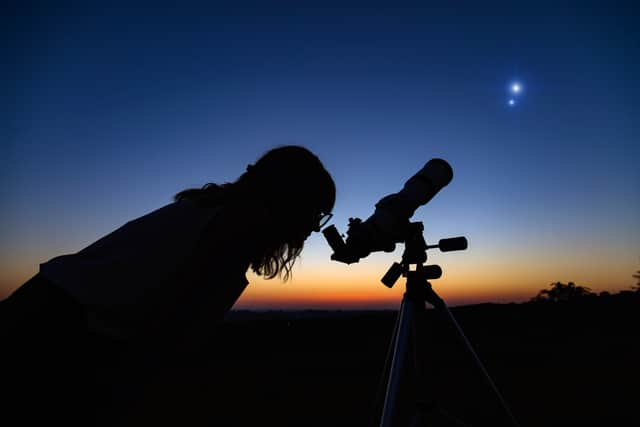Five planets to line up in night sky - how to spot Mercury, Jupiter, Venus, Uranus and Mars
This article contains affiliate links. We may earn a small commission on items purchased through this article, but that does not affect our editorial judgement.
Stargazers across the world had a special opportunity to spot Mercury, Jupiter, Venus, Uranus and Mars on the horizon in alignment last night (March 27). However, if you missed it, fear not as the experts say the majority will be visible in the coming nights with Jupiter set to drop away and appear less visible.
Jake Foster, an astronomer at the Royal Observatory in Greenwich, told Sky News that Venus, Jupiter and Mars would be "easily visible from the naked eye".
Advertisement
Hide AdAdvertisement
Hide AdUsually, stargazers travel to the darkest parts of the country to catch a glimpse at special astronomical events happening above us. However, Foster said that even from a bright city like London the alignment would be visible, though a telescope may be needed for Mercury and Uranus.
Foster also told Sky News: “If you face towards the western horizon, you should be able to see with the naked eye - so without any specialist equipment - three planets in a neat line across the sky, along with the moon. If you have a telescope or a pair of binoculars, possibly even five planets and the moon."
So, why does this happen, and when will it happen next? Here’s everything you need to know.
Why does this happen?
A planetary alignment like this happens due to the flat disk shape of the solar system with the planets orbiting that same flat region in space, making it inevitable that the planets will align across the flat line they follow in the sky.
Astronomer Jake Foster said such alignments were very particular to our perspective from Earth, saying: "The planets aren’t aligned right now, they are all spread out across the Solar System but just from our perspective, every once in a while they get close enough to each other in the sky that we’re able to see quite a few at once."
When will a planetary alignment happen next?
Stargazers will be pleased to know that this happens a few times a year, with the order of planets and visible planets changing. For example, In June, Mercury, Venus, Mars, Jupiter and Saturn could be seen in a line in the night sky.


The next alignment will happen in autumn, featuring Mercury, Saturn, Venus, Uranus and Mars.
Jake Foster said: "We always encourage people to get out there and feel more connected to the skies above them. These events are a great chance to get outside and there are a few easy targets that you can see - the amazing planets of the solar system."
Comments
Want to join the conversation? Please or to comment on this article.
